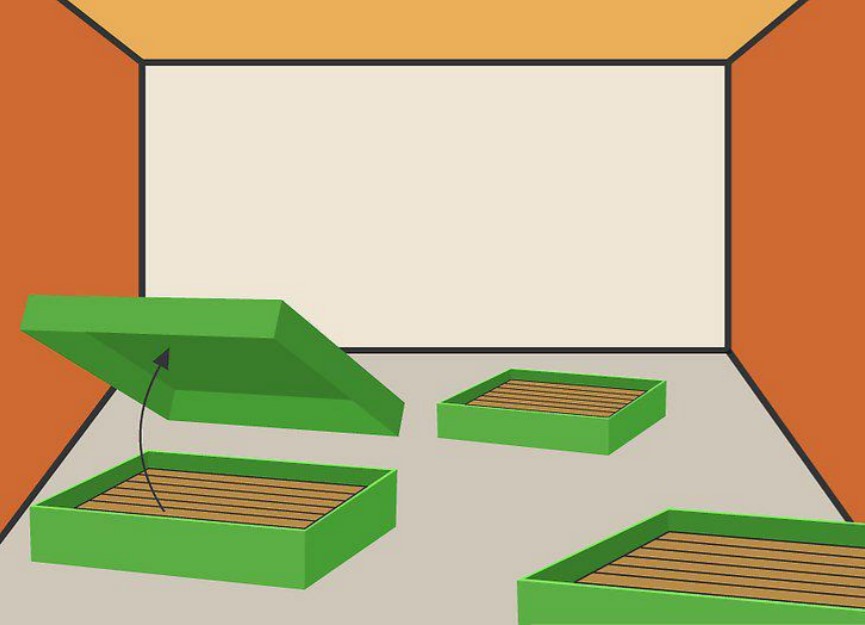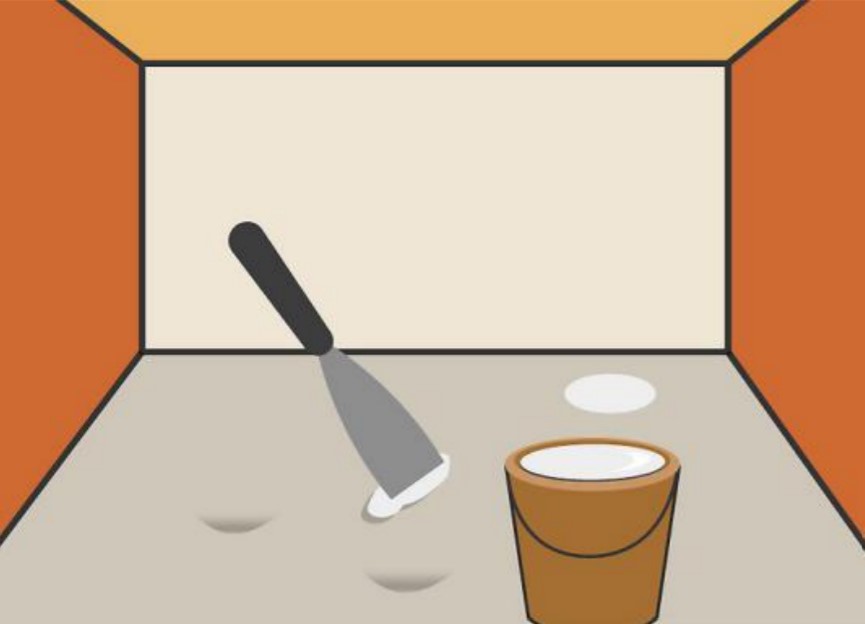Before Installation
1)Preparing Your Flooring
Measure the square footage of your floor.
The pattern you’re laying your flooring in will affect how much you need. Measure the square footage of your floor (1 square meter is about 10.5 square feet). Then add 5-7% more square footage to account for waste if you’re laying your boards straight. Add 15% waste if you’re laying the floors in a herringbone pattern.

Let the flooring acclimate for 3 to 4 days.
Open your boxes of engineered hardwood in the room where you’ll be installing it. Make sure the pieces are flat, not leaning against something, which could warm them. Allow the flooring to sit for 3 to 4 days in that room so it can acclimate to the temperature and moisture and expand or contract as necessary. If you’ve recently installed new drywall or plaster, wait at least a week before opening your boxes of hardwood.

Avoid storing the hardwood in the basement or garage.
The moisture present in most basements and garages is bad for engineered hardwoods. It can warp the wood and permanently damage it.

2)Preparing the Subfloor
Remove any existing baseboards.
Use a razor knife to cut through the caulk where the baseboard meets the wall. Then, insert a pry bar behind the baseboard at the top, and gently tap down on the bar with a hammer until the pry bar is at least halfway down the wall behind the baseboard. Continue this along the baseboard until it completely comes away from the wall.

Take away any other obstructions.
This includes vent grates, end-caps on baseboard heaters, and anything else. Make sure you keep the hardware for these things together so you can reinstall them once your floors are finished.

Walk over the subfloor, listening for squeaks.
If any area of the subfloor squeaks, you can drill Phillips-head screws directly into the floor at that spot. The screw will tighten the subflooring and stop the squeaking.

Level out any bumps. Use a large sander to even out any area of the floor that is bumped up.
You can rent these types of sanders from most home improvement stores. When you’re leveling bumps, start slowly. You don’t want to sand off too much.

Fill in depressions with patching compound.
If there are any dents or divots—like those left behind by carpeting nails— fill them with patching compound. This is the same type of compound you’d use to patch holes in drywall. Fill any depressions deeper than 1 ⁄8 inch (0.32 cm) and let it dry before you sand it even with the rest of the floor. To sand down compound, you can sand by hand. The industrial sander for large areas on the subfloor will be too powerful.

Trim the bottom of doorways if the flooring won't fit.
Your new flooring may be thicker—and therefore need more clearance under doorways —than your old flooring. Place a scrap piece of the new flooring in front of the bottom of the door jamb. Then lay a handsaw on top of the flooring and slowly saw through the jamb. Repeat on the other side of the door and for all doors in the room.

Clean the subfloor.
Once you’re done sanding, sawing, and filling in the floor, sweep or vacuum up the debris. The subfloor should be totally clean. Any debris left there can cause your engineered hardwoods to look uneven.

Nailing Down Engineered Hardwoods
Cover the subfloor with 15 lb (6.8 kg) builder’s felt.
Run the felt in the same direction that your flooring will be going. You probably won't be able to use one piece of felt to cover the whole floor. In that case, set the felt so that the edges touch. Use a hammer tacker to staple down the felt edges every 4 feet (1.2 m) and within 1 ⁄2 inch (1.3 cm) of the wall. When you’re finished laying the felt, hammer down on staples that aren’t flush with the floor.

Place spacers against the wall.
The spacers should be 1 ⁄2 inch (1.3 cm) thick. Lay them against the wall where you’re laying your first row of flooring and the adjacent wall, about 4 inches (10 cm) apart. This keeps your flooring spaced and prevents buckling. Spacers are usually included in your flooring, but if they aren't, you can purchase them at most home improvement stores.

Start the first row in the corner of the longest exterior wall in the room.
Lay your first piece of flooring so that the grooved edge of the wood is against the spacers. Then butt up the next piece of flooring next to the original piece, making a long strip along the wall with the spacers. Use a mallet to tap the end of each strip so they fit snugly together.

Place a straightedge against the tongues of the first row.
The front edge of each piece of flooring should have a tongue—a little piece that sticks out. Use a straight edge to line up against the tongues and pull the flooring forward so every piece is flush against the straightedge.

Nail each board within 1 inch (2.5 cm) of the wall.
Once you’ve got the first row laid down, nail the board down within 1 inch (2.5 cm) of the wall. This secures the first row of flooring and prevents any movement as you stack more rows. Nail the boards with 1.5 in (3.8 cm) nails every 8 inches (20 cm).

Toenail the first row.
You can use a regular hammer and nails, but a pneumatic nail gun is quicker and easier. Once you’ve got the first row nailed near the wall, you’ll need to toenail it. This means driving a 1.5 in (3.8 cm) nail at a 45-degree angle through the tongue of the boards. Repeat this every 4 inches (10 cm) and no closer than 2 inches (5.1 cm) to the edge nearest the adjacent wall.

Lay down the second row of flooring.
As you lay the second row of flooring, make sure you’re choosing lengths that don’t line up exactly with the first row. Otherwise your edges will all line up and ruin the look of the flooring. Instead, offset the end joints by 12 inches (30 cm) or so.

Tap each row snugly against the one before it.
Once you’ve set the next row of flooring and your end-joints are staggered, use a mallet or hammer and tapping block to fit the rows snugly together. Lay the tapping block in front of the new row of flooring and gently tap it with the hammer. If you hit the tapping block too hard, you can ruin the tongue of the floor. It should take you a couple of gentle taps to get each piece of flooring to fit snugly together.

Toenail the next row.
After you’ve tapped the new row of flooring, you’ll need to nail the pieces of flooring. Insert nails in the tongue of the flooring every 4 inches (10 cm).

Leave 1 ⁄2 inch (1.3 cm) between the last row and the wall.
This saves enough space for the trim that comes with the hardwood. You’ll need to take the tongue off the last row of flooring—you can use a table saw to do so, or a hand saw if you don’t have a table saw.

Fasten the trim in place with a brad nailer.
These pieces of trim will cover the space between the edge of the flooring and the wall. Lay them in place and then use a pull bar to pull them close to the last row of flooring. Once they're flush against the first row of flooring, nail them down.








